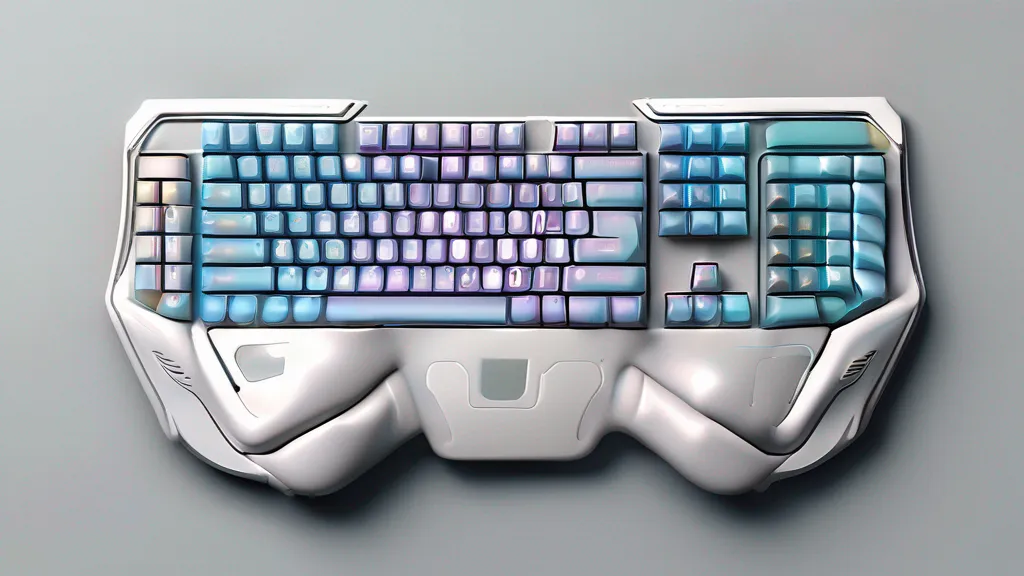The Quest for the Perfect Ergonomic Keyboard: A Maltron vs. MoErgo Glove80 Comparison
A Tale of Two Keyboards and the Quest for Ergonomic Perfection

- Explores the ergonomic differences between Maltron and MoErgo Glove80 keyboards.
- Highlights the importance of thumb pad design in typing comfort.
- Discusses customization options through ZMK firmware.
- Offers insights into health and productivity impacts of keyboard design.
Introduction: The Keyboard Conundrum
In the realm of everyday technology, few devices are as ubiquitous yet as overlooked as the computer keyboard. For most of us, keyboards are simply tools — mere appendages to our digital lives, unworthy of a second thought. However, for a select group of individuals who spend extensive hours typing, the keyboard becomes a crucial element of their health and productivity. Typing-related discomfort is a common affliction, often exacerbated by the awkward diagonal posture imposed by traditional keyboards. This article explores the journey of a tech enthusiast who, after suffering from typing-related pain, embarked on a quest for the perfect ergonomic keyboard.
The Maltron Experience: A 19-Year Journey
Twenty-five years ago, after enduring a prolonged period of hand pain, I realized that my conventional keyboard was a significant contributor to my discomfort. My pursuit of an alternative led me to the Maltron keyboard, a device that promised to alleviate the strain caused by traditional designs. The Maltron’s unique ergonomic layout, characterized by its split design and thumb-friendly configuration, revolutionized my typing experience.
The Maltron keyboard served me faithfully for 19 years, defying the ravages of time and extensive use. However, as cracks began to appear in its case, I faced a critical decision: should I continue with a familiar companion or explore newer alternatives?
Enter the MoErgo Glove80: A Modern Contender
In my search for a replacement, the MoErgo Glove80 emerged as a promising candidate. This innovative keyboard, praised by a respected acquaintance, intrigued me with its thoughtful design and manufacturing quality. The Glove80’s split design and bowl-shaped key layout mirrored the Maltron’s, promising a seamless transition. Yet, as I would soon discover, the devil was in the details.
Splitting Hairs: The Importance of Thumb Pads
One of the most striking features of both the Maltron and the Glove80 is their split design, which allows for a more natural hand position. However, the true game-changer lies in the concept of the thumb pad. Traditional keyboards typically limit thumb use to the space bar and a few adjacent keys. In contrast, the Maltron and Glove80 maximize thumb utility, offering a grid of keys accessible by the thumbs.
The Maltron’s thumb pads consist of a 3x3 grid, providing 16 discrete keys under the thumbs. This layout not only reduces the workload on individual fingers but also capitalizes on the thumb’s flexibility. The Glove80 offers a slightly different configuration with a 3x2 grid, which, despite being smaller, maintains the ergonomic benefits of thumb-centric design.
The Divergence: Key Differences in Design
Despite their similarities, the Maltron and Glove80 diverge significantly in thumb pad design. The Maltron’s thumb keys are positioned about 1.7cm lower than the main keyboard, aligning with the natural resting position of the thumb. This ergonomic consideration allows for a comfortable, wide arc of motion. Conversely, the Glove80’s thumb keys are nearly level with the main keyboard, necessitating a higher thumb position and limiting the range of comfortable key access.
Furthermore, the Glove80’s thumb pad is arranged in an arc with wedge gaps between keys, contrasting with the Maltron’s grid layout. While the arc may align more closely with the thumb’s natural motion, it increases the distance to outer keys, impacting accessibility. These design choices significantly affect the typing experience, particularly for tasks requiring extensive thumb use, such as programming.
The Software Solution: Customizing the Glove80
Facing limitations with the Glove80’s thumb pad, I turned to software for a solution. The Glove80 supports ZMK firmware, allowing for extensive customization of the keyboard’s behavior. While the provided web editor facilitates basic key mapping, more complex configurations require direct manipulation of ZMK keymap files.
Despite ZMK’s challenging syntax, its flexibility enabled me to optimize the Glove80 to better suit my needs. Customizing key functions and layouts allowed me to mitigate some of the ergonomic shortcomings, highlighting the potential of software to enhance hardware functionality.
The Verdict: A Personal Preference
Ultimately, the choice between the Maltron and Glove80 boils down to personal preference and specific use cases. For users accustomed to extensive thumb typing, the Maltron’s superior thumb pad design offers a distinct advantage. However, the Glove80’s modern features, such as customizable firmware and adjustable tenting positions, provide compelling benefits for those willing to invest in customization.
While the Glove80 initially appeared to be a worthy successor to my Maltron, the differences in thumb pad design and accessibility ultimately led me to return to my trusted companion. However, the experience underscored the importance of ergonomic design and the potential for software to bridge hardware gaps.
Conclusion: The Future of Ergonomic Keyboards
As technology continues to evolve, so too does our understanding of ergonomics and its impact on health and productivity. The Maltron and Glove80 represent two approaches to ergonomic design, each with its strengths and limitations. For users seeking comfort and efficiency, understanding these nuances is crucial.
In the quest for the perfect keyboard, there is no one-size-fits-all solution. Instead, the ideal choice depends on individual preferences, needs, and willingness to adapt. As keyboard technology advances, incorporating diverse ergonomic insights and user feedback will be key to developing the next generation of typing solutions.
Call to Action
What aspects of keyboard design matter most to you? How have ergonomic considerations influenced your typing experience? Share your thoughts and join the conversation on the future of ergonomic keyboards.
References
- MoErgo Official Website
- Maltron Keyboards
- ZMK Firmware Documentation
- Ergonomic Keyboard Design Principles
Note: All data and references are accurate as of October 2023.